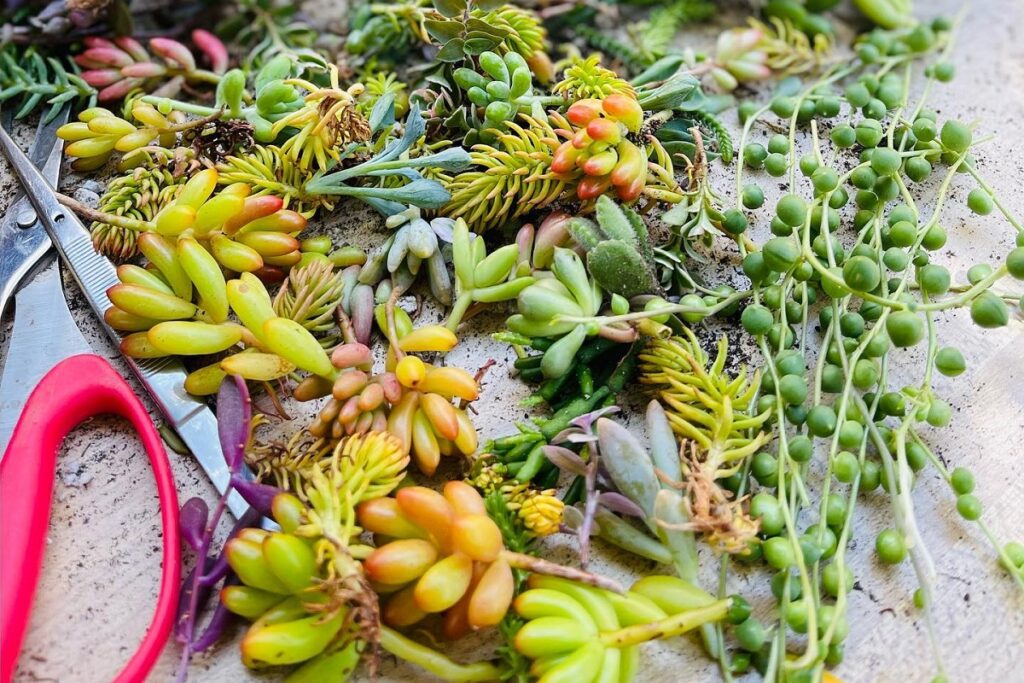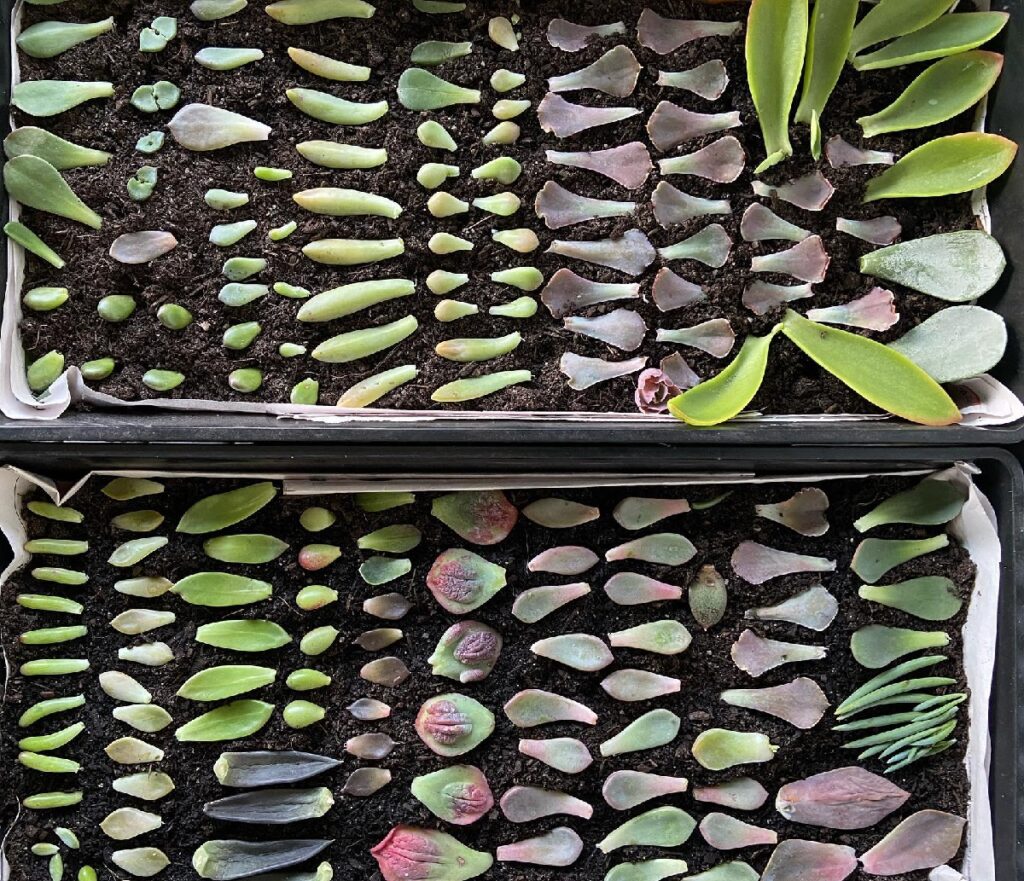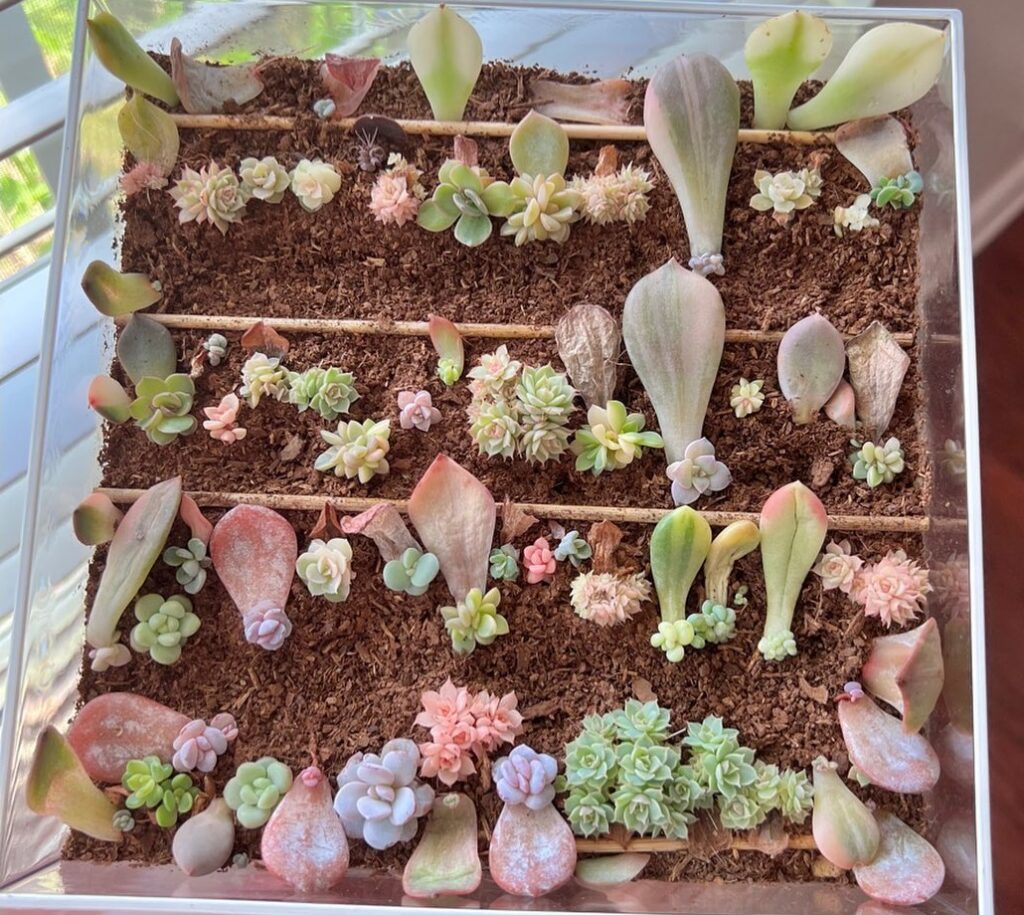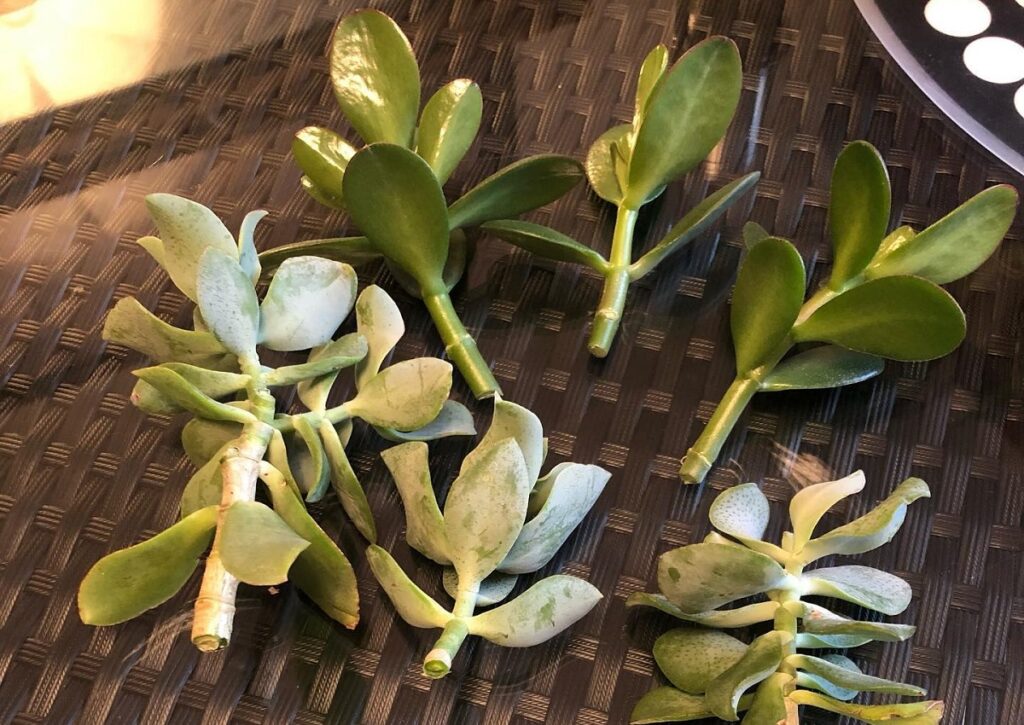Struggling to Root Succulent Cuttings? Read This First
Propagating new succulents from cuttings is exciting – until those cuttings stubbornly refuse to grow roots no matter what you try. If you’re feeling frustrated, this guide is for you. I’ll share easy tips to get your succulent cuttings rooting reliably so you can enjoy watching them flourish into full plants.

Propagating succulents at home is such a rewarding hobby, whether you’re growing for yourself or giving adorable new plants as gifts. But when those cuttings seem stuck after weeks or months in soil, it’s incredibly disappointing. Don’t lose hope! Simple adjustments can get those stubborn cuttings rooting and thriving.
Contents
Why Won’t My Succulent Leaf Cuttings Root?
Succulent leaves are an easy way to propagate new plants, but sometimes the cuttings refuse to cooperate. Here are the most common roadblocks:
1. The Environment Isn’t Right
Succulent leaves need consistently moist soil and the proper amount of light to take root. If temperatures, water, or nutrients get too high or low, rooting stalls out. Pay close attention to keeping conditions optimal whether propagating indoors or out.
2. Not Enough Air Flow
Just like people, developing roots need access to air pockets in the soil to breathe and absorb nutrients properly. Soil that is too compacted or dense restricts airflow and root growth. Use a very well-draining potting mix.

3. The Species Won’t Propagate From Leaves
While most common succulent varieties like Aloes, Crassulas, Echeverias and Kalanchoes readily propagate from leaves, there are some types of succulents that will frustrate your efforts no matter how ideal the conditions:
- Sempervivums (Hen and Chicks)
- Aeoniums
Rather than wasting time with leaf cuttings, opt for stem cuttings or offsets with these stubborn varieties right from the start.
Help Your Succulent Leaf Cuttings Root Successfully
Ready to finally get those leaves rooting? Follow these tips for higher odds of success:
- Start with healthy, undamaged leaf cuttings free of pests. Spray with insecticidal soap if needed.
- Use a chunky, well-draining succulent/cactus potting mix – about 1 part peat moss to 1 part perlite. The pot must have drainage holes.
- Place the leaf cuttings on top of the lightly misted soil and gently press into place.
- Mist the soil surface every 3-4 days, avoiding oversaturation.
- Provide bright, indirect light like from a sunny window. Direct sun can burn delicate new growth.
With the proper moisture levels, sunlight, and soil aeration, you’ll start seeing new roots and growth in just a few weeks!

Why Succulent Stem Cuttings Fail to Root
If stem cuttings are the way to go for your succulent but they’re flopping, here are some potential pitfalls to investigate:
- Poor drainage – Soil too dense or lacking drainage will drown tender new roots as soon as they sprout. Go for a very chunky, porous mix.
- Humidity hell – Succulents need air circulation to root well. An overly humid environment starves them of good airflow. Use a fan or open windows.
- Not enough light – Like leaf cuttings, stems need plenty of bright indirect sunlight to photosynthesize and grow roots. A shady area won’t cut it.
- Temperature troubles – Between 70-80°F (21-27°C) is the sweet spot for stem cuttings to root easily. Too hot or cold halts progress.
- Improper soil – A basic potting mix isn’t ideal. Make sure to use cactus/succulent soil with ingredients like perlite or vermiculite added.

Succulents That Don’t Propagate From Stems
Don’t get discouraged if your Agave, Aloe, Sempervivum, or Haworthia succulent cuttings refuse to root from stems – that’s normal! These unique varieties create offsets or “pups” rather than working from cuttings.
To propagate, simply detach any offsets or pups from the main plant and repot them on their own. With time and care, the offsets will establish themselves as new, separate plants.
Whether rooting leaves, stems or offsets, a little troubleshooting goes a long way to successfully propagating succulents. Stay patient and observant, and you’ll be rewarded with an ever-growing collection!
